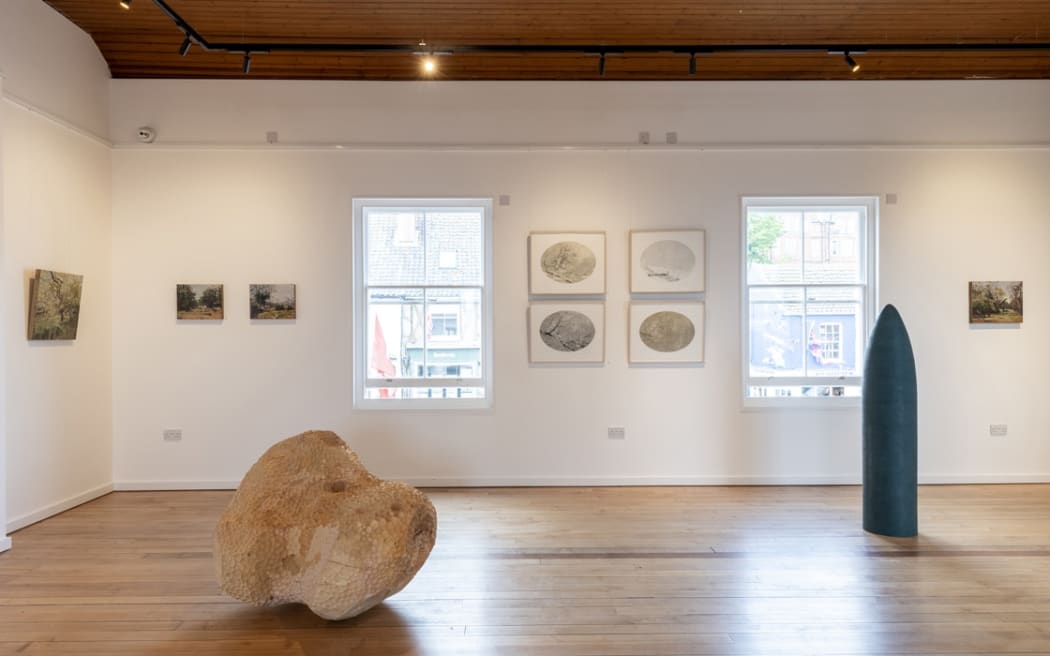
Installation of sculpture by Jack Wheeler, River's Edge
It is worth declaring their 'arrangement' up front as it is unusual, and for them a successful means of doing a variety of things while enabling them to develop their individual projects. We are delighted Jack and Beth have decided to show their work together on this occasion.
Their finds along the Norfolk shoreline on walks not far from where they live have been the inspiration for their presentation for River's Edge. Both artists pursue their interests using natural materials and processes. However, a common starting point has led them toward different outcomes.Their work may share a handmade aesthetic and a material presence, but they operate on different scales and have established separate methodologies.
Hand-hewn wood forms the basis for most of what Jack and Beth do. In Beth Groom's case she frequently includes moulded or cast clay with timber elements. She relishes risk by 'experimenting' with a fired component right alongside a more resilient substance. The more fragile component will frequently be positioned in a manner that might compromise the integrity of the piece. It is a worthwhile strategy, lending a sense of jeopardy to what could be viewed as a rather transactional study in pure form –'I did A and so I ended up with B'.
The two pieces in the exhibition have forms in common, in differing configurations. In one a delicate earthenware cone supports a slither of hand-carved oak, pierced and shaped like a sail. In another, a set of three shaped chestnut blocks have a cone inserted into their top - so that they sit sharp end down into the base, like an ice cream cone waiting for collection on an ice cream parlour counter. These sculptures follow a production process that is process led, worked out as she hones her final format through trial and error in a fashion that is both a gesture and a means of working something out.


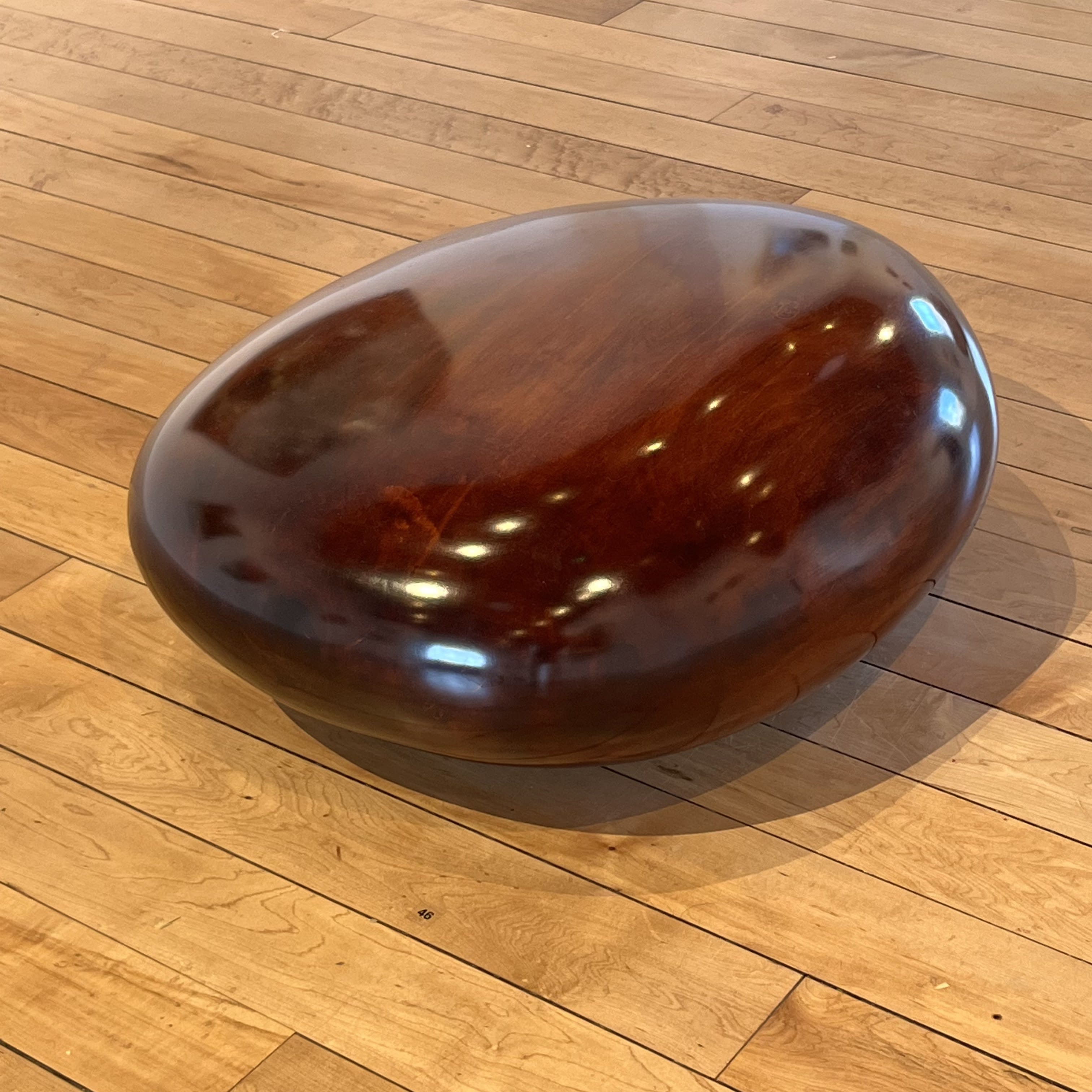

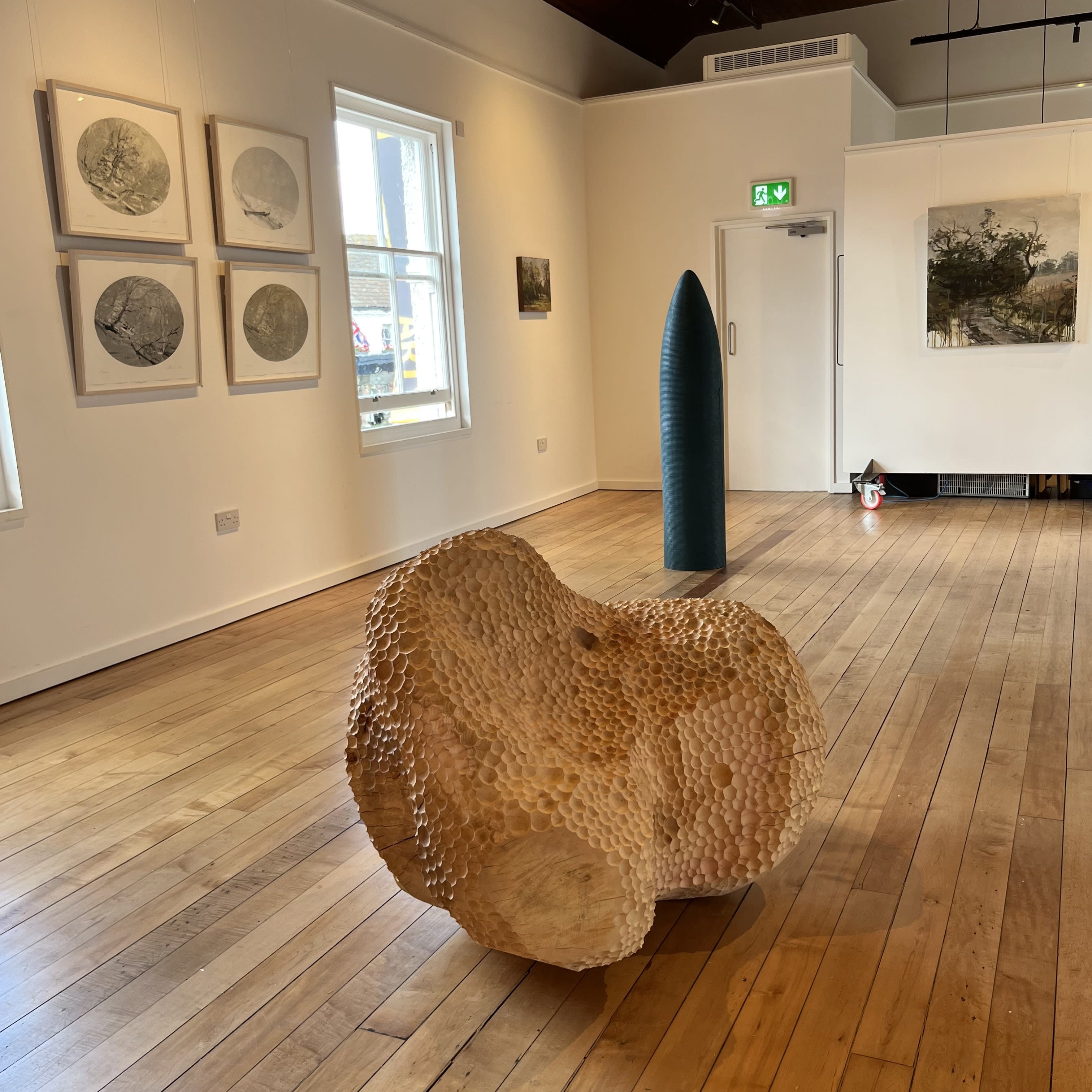
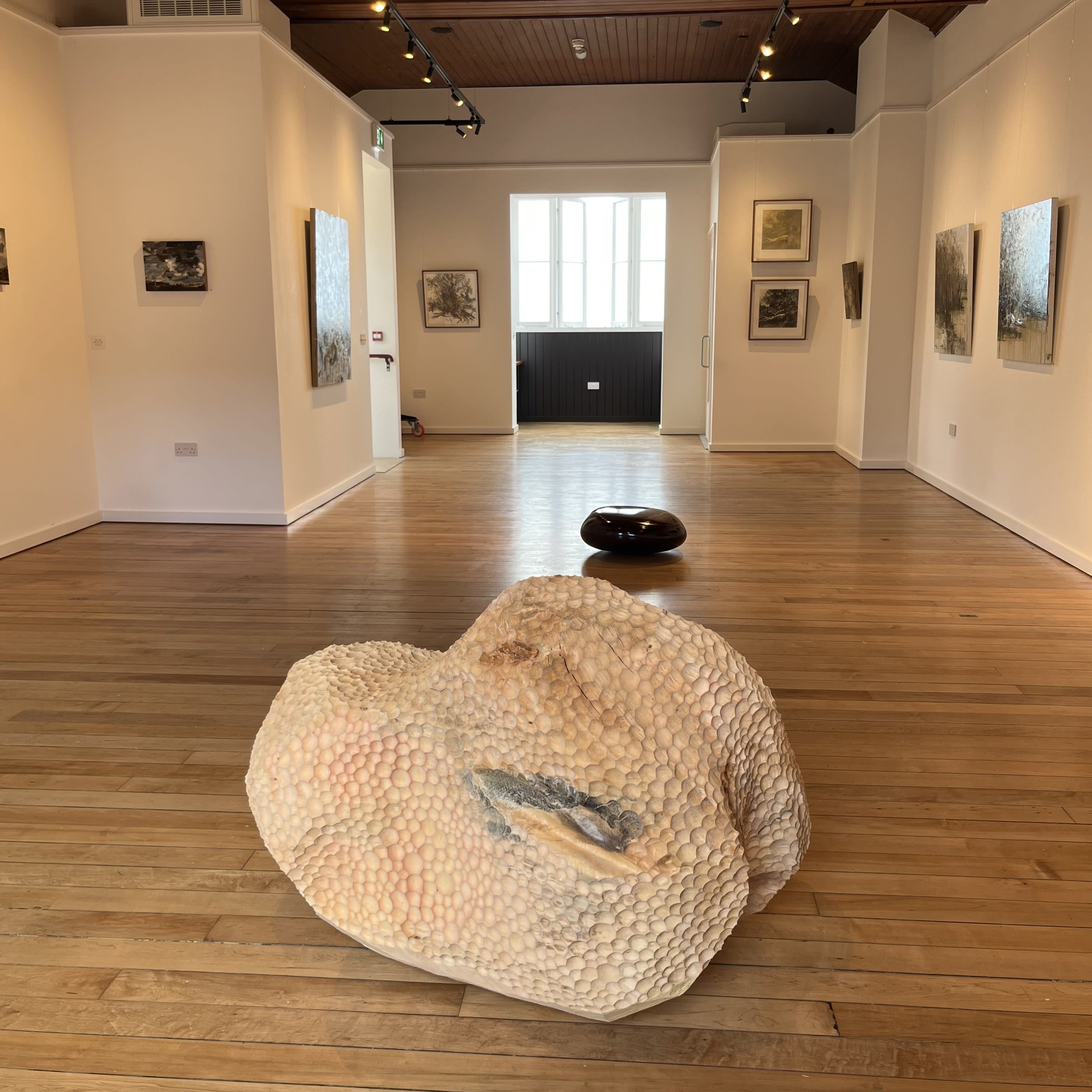
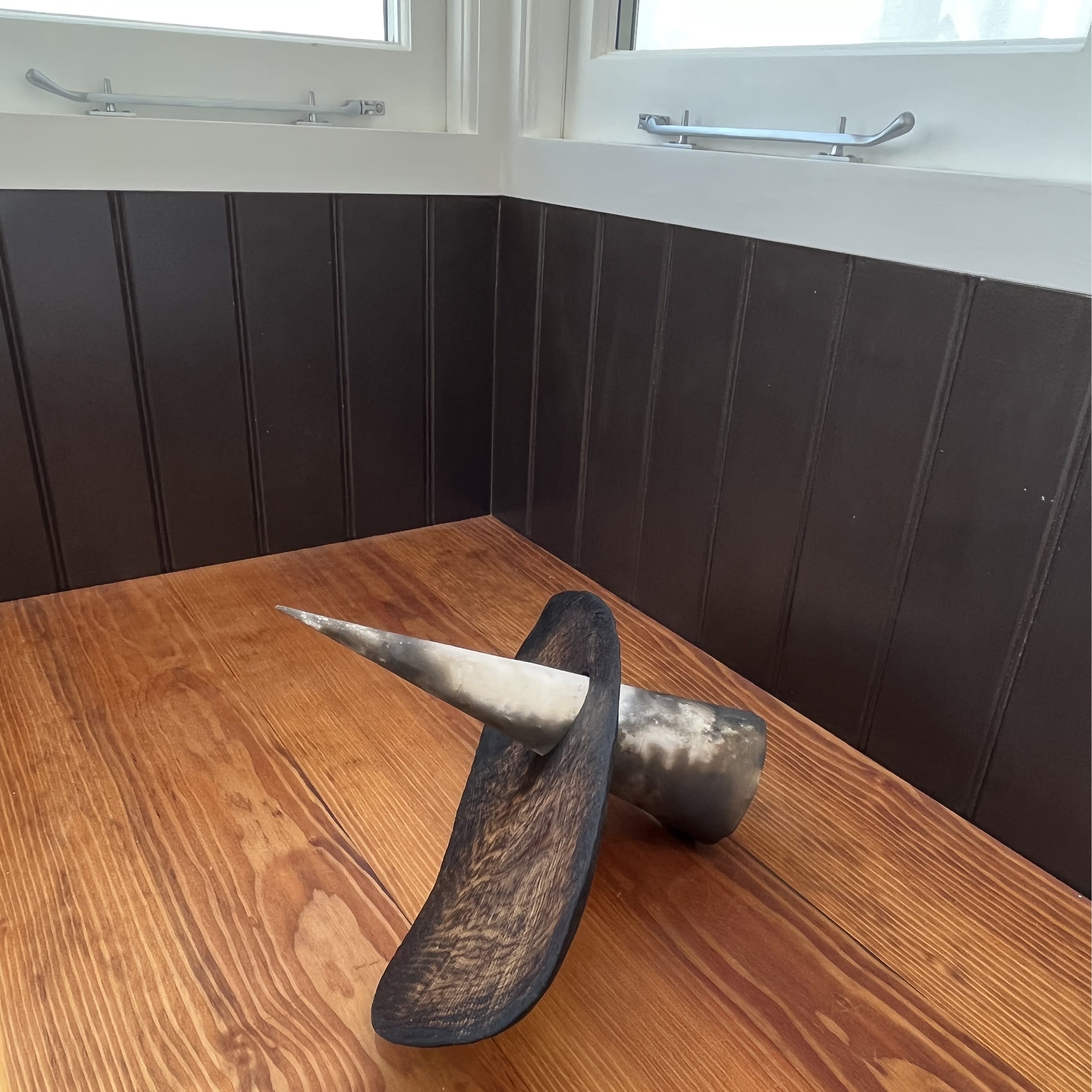
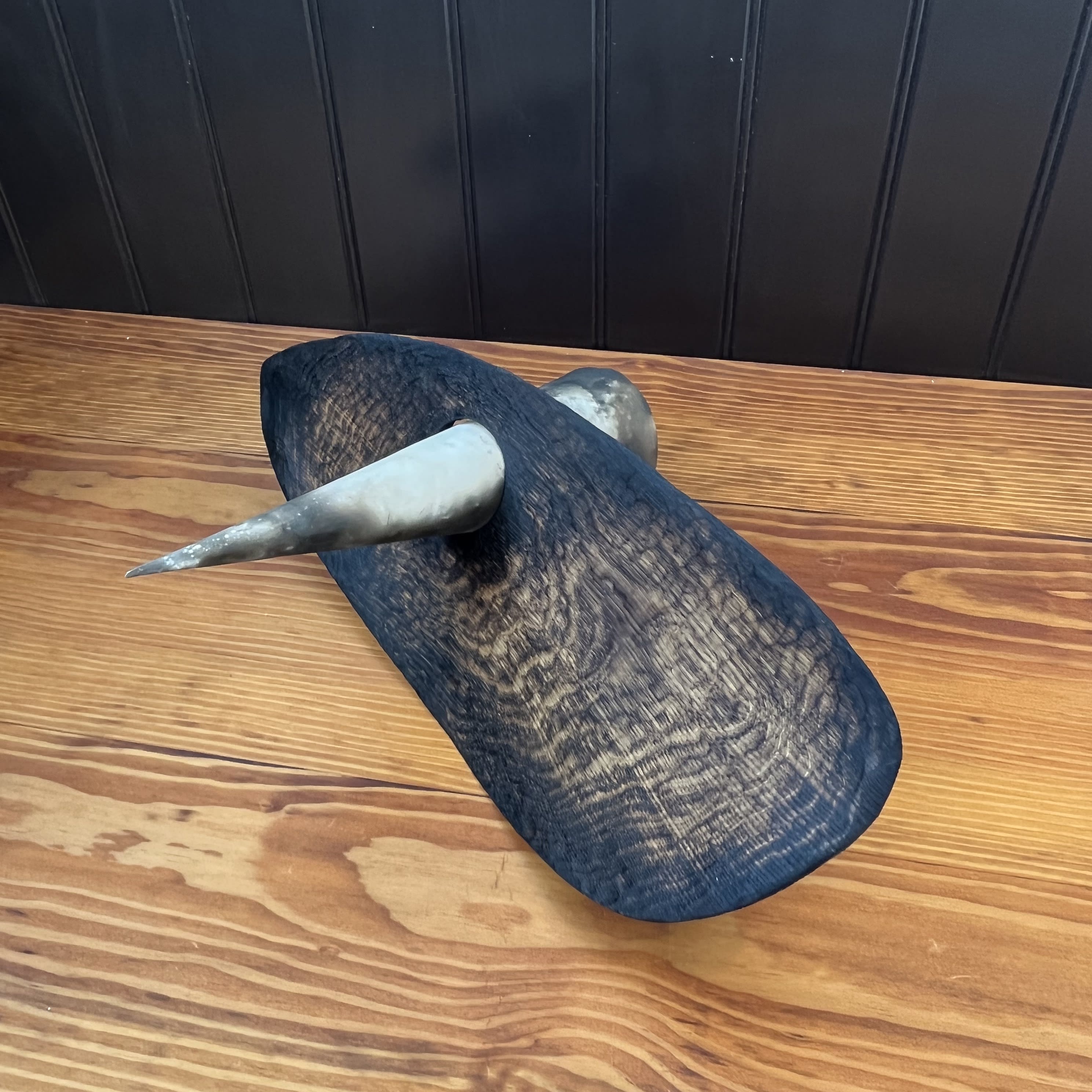
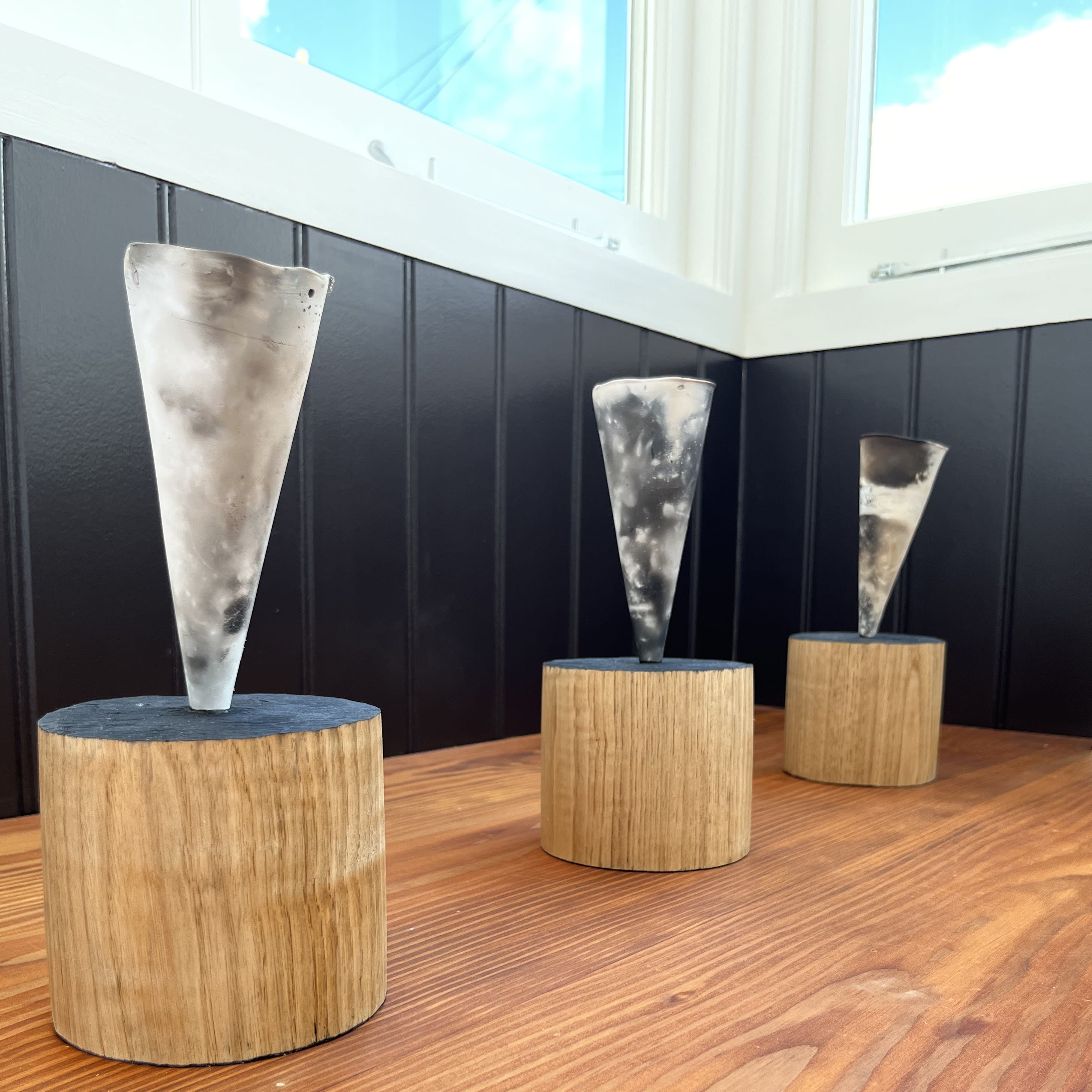

New sculpture by Jack Wheeler (top) and Beth Groom (below)
Jack Wheeler is profoundly comfortable working in wood. His sculptural approach is generous and encouraging. By using a particular tool like a fine chisel or an adze, he can achieve a finish that moves a sculpture toward a state of readiness, without overwhelming the quality of the wood. Jack reveals the origin of the material, introducing the viewer to the strangeness of its growing process or its final formation.
In parallel to his sculptural work Jack makes beautiful handmade vessels, spoons, beakers and trays from wood. Often lacquered or stained his wooden forms encompass a wide variety of hand finishes and shapes that encourage associations with the natural cycle: seed, sapling, growth, transformation, tree.
In an earlier piece Jack removed the centre from a cross section of a tree, using one of the growth rings as his marker to judge where the tree's growth coincided with an average human lifespan. His process inverts the outcome of sculptor Giuseppe Penones' tree sculptures. Jack focuses on the shell of the outer rings and removes the early growth, whereas Penone whittled away the outer layers to reveal the tender sapling within the mature tree.
For River's Edge Jack Wheeler has made three new works. All three are presented at floor level. The first is a menhir-shaped, teal-coloured column called 'Between Belief and Place'. The second is a highly lacquered, enlarged, shiny seed-shaped piece finished in Urushi lacquer called Scoria. The third a bleached piece of carved lime called Litus, with an intricate undulating surface that resembles a volcanic stone.
About the author

Paul Barratt
Paul Barratt started working in contemporary art galleries in 1989, having graduated in Fine Art from Goldmsith’s, London University. He initially worked at Anthony d’Offay Gallery, one of the contemporary art dealers, who dominated the London art market in the 80s and 90s. He was approached by the Lisson Gallery to be gallery manager for the influential art dealer Nicholas Logsdail. This was followed by a short period in New York at Gladstone Gallery, to work for visionary art dealer Barbara Gladstone, working with the artist and filmmaker Matthew Barney.
On his return to London, Paul secured a place on the postgraduate curatorial course at the Royal College of Art, to complete an MA. After graduation in 2001, he worked as an independent curator on several projects in Oslo, London, Brighton and Basel, before joining Paul Vater at his design agency Sugarfree in 2004. He has worked with Paul ever since.












